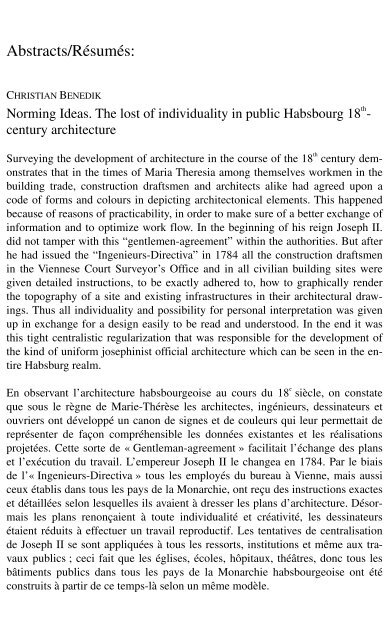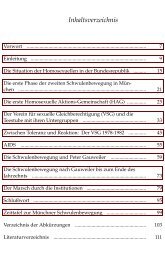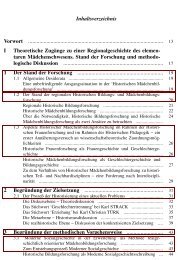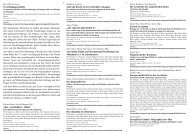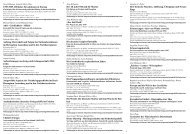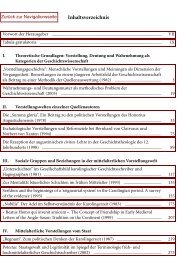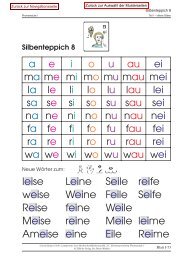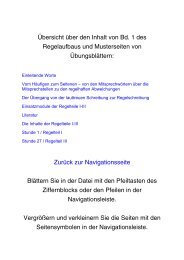Inhaltsverzeichnis/Table des matières - Dr. Dieter Winkler Verlag
Inhaltsverzeichnis/Table des matières - Dr. Dieter Winkler Verlag
Inhaltsverzeichnis/Table des matières - Dr. Dieter Winkler Verlag
Sie wollen auch ein ePaper? Erhöhen Sie die Reichweite Ihrer Titel.
YUMPU macht aus Druck-PDFs automatisch weboptimierte ePaper, die Google liebt.
Abstracts/Résumés:<br />
CHRISTIAN BENEDIK<br />
Norming Ideas. The lost of individuality in public Habsbourg 18 th<br />
-<br />
century architecture<br />
Surveying the development of architecture in the course of the 18 th century demonstrates<br />
that in the times of Maria Theresia among themselves workmen in the<br />
building trade, construction draftsmen and architects alike had agreed upon a<br />
code of forms and colours in depicting architectonical elements. This happened<br />
because of reasons of practicability, in order to make sure of a better exchange of<br />
information and to optimize work flow. In the beginning of his reign Joseph II.<br />
did not tamper with this “gentlemen-agreement” within the authorities. But after<br />
he had issued the “Ingenieurs-Directiva” in 1784 all the construction draftsmen<br />
in the Viennese Court Surveyor’s Office and in all civilian building sites were<br />
given detailed instructions, to be exactly adhered to, how to graphically render<br />
the topography of a site and existing infrastructures in their architectural drawings.<br />
Thus all individuality and possibility for personal interpretation was given<br />
up in exchange for a <strong>des</strong>ign easily to be read and understood. In the end it was<br />
this tight centralistic regularization that was responsible for the development of<br />
the kind of uniform josephinist official architecture which can be seen in the entire<br />
Habsburg realm.<br />
En observant l’architecture habsbourgeoise au cours du 18 e<br />
siècle, on constate<br />
que sous le règne de Marie-Thérèse les architectes, ingénieurs, <strong>des</strong>sinateurs et<br />
ouvriers ont développé un canon de signes et de couleurs qui leur permettait de<br />
représenter de façon compréhensible les données existantes et les réalisations<br />
projetées. Cette sorte de « Gentleman-agreement » facilitait l’échange <strong>des</strong> plans<br />
et l’exécution du travail. L’empereur Joseph II le changea en 1784. Par le biais<br />
de l’« Ingenieurs-Directiva » tous les employés du bureau à Vienne, mais aussi<br />
ceux établis dans tous les pays de la Monarchie, ont reçu <strong>des</strong> instructions exactes<br />
et détaillées selon lesquelles ils avaient à dresser les plans d’architecture. Désormais<br />
les plans renonçaient à toute individualité et créativité, les <strong>des</strong>sinateurs<br />
étaient réduits à effectuer un travail reproductif. Les tentatives de centralisation<br />
de Joseph II se sont appliquées à tous les ressorts, institutions et même aux travaux<br />
publics ; ceci fait que les églises, écoles, hôpitaux, théâtres, donc tous les<br />
bâtiments publics dans tous les pays de la Monarchie habsbourgeoise ont été<br />
construits à partir de ce temps-là selon un même modèle.


